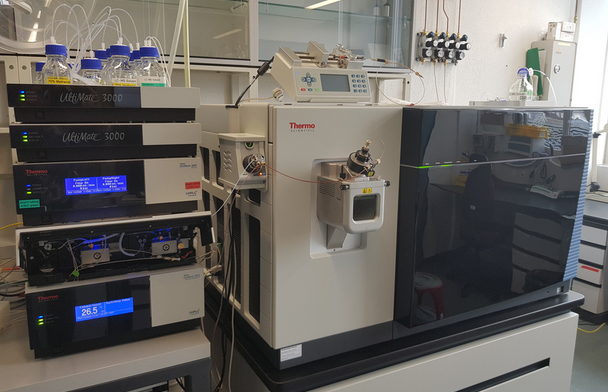Department Environmental Toxicology
Bioanalytics

Welcome to the Bioanalytics Group. We are part of the Environmental Toxicology Department at Eawag. Our work aims to develop and apply cutting-edge bioanalytics methods to decipher the molecular mechanisms behind the adaptive responses and adverse effects of chemicals and other stressors in aquatic organisms. We strive to apply the accumulated knowledge and experience to (i) support the use of ‘-omics’ data in chemical risk assessment and (ii) guide the development of novel alternative (non-animal) toxicity testing assays that could offer integration of stressor signals across several molecular pathways and improved relevance for higher-level organism responses.
To characterize the molecular baselines and their perturbation by chemicals and other stressors, we use an array of biochemical and molecular biology techniques, with the most emphasis placed on mass spectrometry-based methods for measuring proteins and metabolites. We carry out both global, i.e. ‘-omics’, type of analyses, as well as targeted, i.e. hypothesis-driven, studies focused on individual proteins and metabolites of interest. We also develop approaches to monitor dynamics of phosphorylation-based regulatory signaling.
Among the diversity of aquatic inhabitants, we focus mostly on fish and use diverse model systems to study them, ranging from cell cultures to embryos to adults. We also collaborate with other groups to investigate aquatic organisms representing other trophic levels, for example, phytoplankton.
Whenever possible, we seek to correlate the observed molecular responses with higher-level adverse outcomes, such as cellular proliferation, growth, or animal behavior, positioned along the adverse outcome pathway (AOP) continuum. Organizing and analyzing knowledge according to the AOP framework supports interpretation of ‘-omics’ data and identification of promising alternative toxicity assays for further development of risk assessment strategies.











